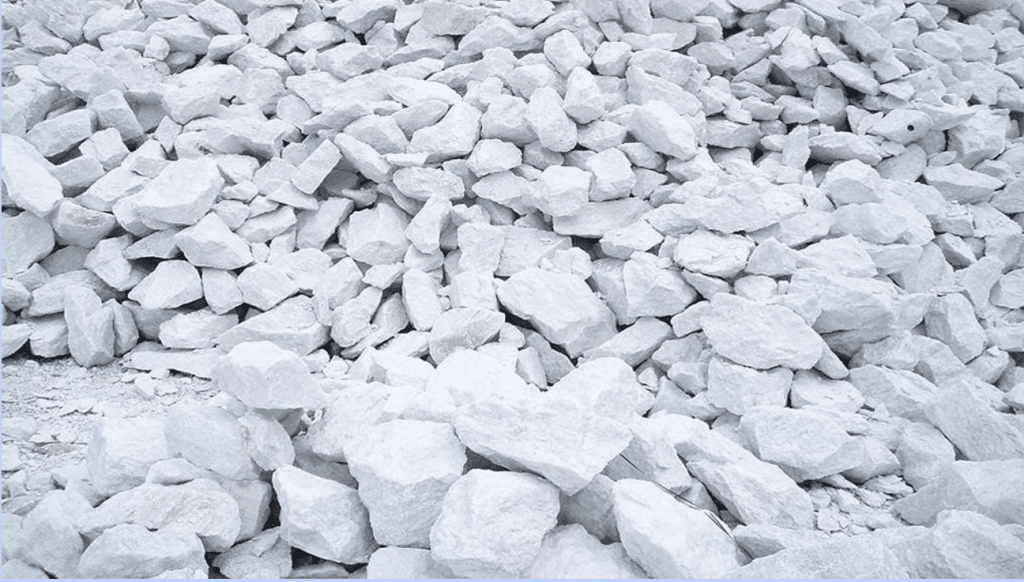In the production of dairy, limewater (pebble lime mixed with water) is used in butter production. In the process of separating cream from whole milk, the cream’s acidity has to be reduced before it is pasteurized, for which purpose limewater is added to it. Then the casein (which is gotten by acidifying the skimmed milk) is treated with a mix of lime and sodium fluorite to get a substance called calcium caseinate, which is a type of glue.
Finally, lime is added to the remaining whey which was fermented, and that yields calcium lactate. You have probably heard of this substance because it is used as a supplement to increase calcium levels in one’s diet. You can read more about that here. Alternatively, it can be further acidified in order to make lactic acid, which is used in the cosmetic industry.
The baking business also features its fair share, since quicklime is an important ingredient in making monocalcium phosphate. This compound is in fact a widespread kind of baking powder. It’s made by mixing quicklime that has a high content of calcium with a quantity of pure phosphoric acid.
The industry of sugar employs pebble lime in its refining and purifying processes. This goes for sugar made of sugar cane as well as that made from sugar beets, and other types as well, including maple and the relatively less widespread sorghum. These plants typically undergo water processing that results in raw beet or cane juice. The juice has a low pH value and is riddled with impurities that get dissolved in the water.
To counteract that, lime hydrate is added to the mix. This increases the pH and the impurities get caught by the new molecules, which results in insoluble elements forming in the juice and they can then be easily removed. In the end, any lime excess is eliminated either by adding in phosphoric acid, just like in producing baking powder, or by the process of carbonation. You can get a more in-depth look at that particular procedure at this link: https://www.ugr.es/~grupo179/pdf/Cultrone%2005b.pdf
Storage solutions for fruits and vegetables rely heavily on pebble lime as well. In particular, produce that has to be stored under controlled atmospheric conditions requires it. When the produce undergoes its ripening processes, it releases a quantity of CO2.
So, bags of slaked lime are placed in the same room in order to absorb it. This means that the level of oxygen is higher than the CO2 level, which in turn allows the fruits and vegetables to remain fresh over longer spans of time. This practice is employed in storing apples, plums, cabbages, tomatoes, and pears.

In other industrial applications
You will find pebble lime in producing lining for kilns and furnaces (especially silica bricks which are an essential component of glass furnaces), sophisticated steel alloys, insecticides, cement, pottery glazes, and paper. Traditional house painting is also done with slaked calcia, and there’s a practice in some rural areas of coating tree trunks in it to repel hares and various other annoying critters from orchards. It’s featured in the transportation industry as well, to safely and hygienically transport oils. You can get an idea of oil transport containers at this link: https://www.descase.com/products/transfer/oil-transfer-containers/
Burnt lime has an application even in such endeavors as producing glue. In particular, this starts in rendering plants. In case you’re not familiar with those, a rendering plant is a place that gathers waste materials such as animal tissue from carcasses, discarded grease from kitchens, packing house waste, blood from slaughterhouses, feathers, hair and a whole variety of other substances, and then converts them into usable material.
They are typically made into industrial oils and fats, for example, tallow, which is used in the manufacture of soap, or into other secondary products such as fertilizers. Now, those many raw waste materials are treated with lime slurry in order to make the collagen in them swell up (this primarily refers to the various organic animal waste). The altered stock is then washed out, to remove lime residue and other unwanted components. Then it gets properly dried and finalized, and the end result is either gelatin or glue.







